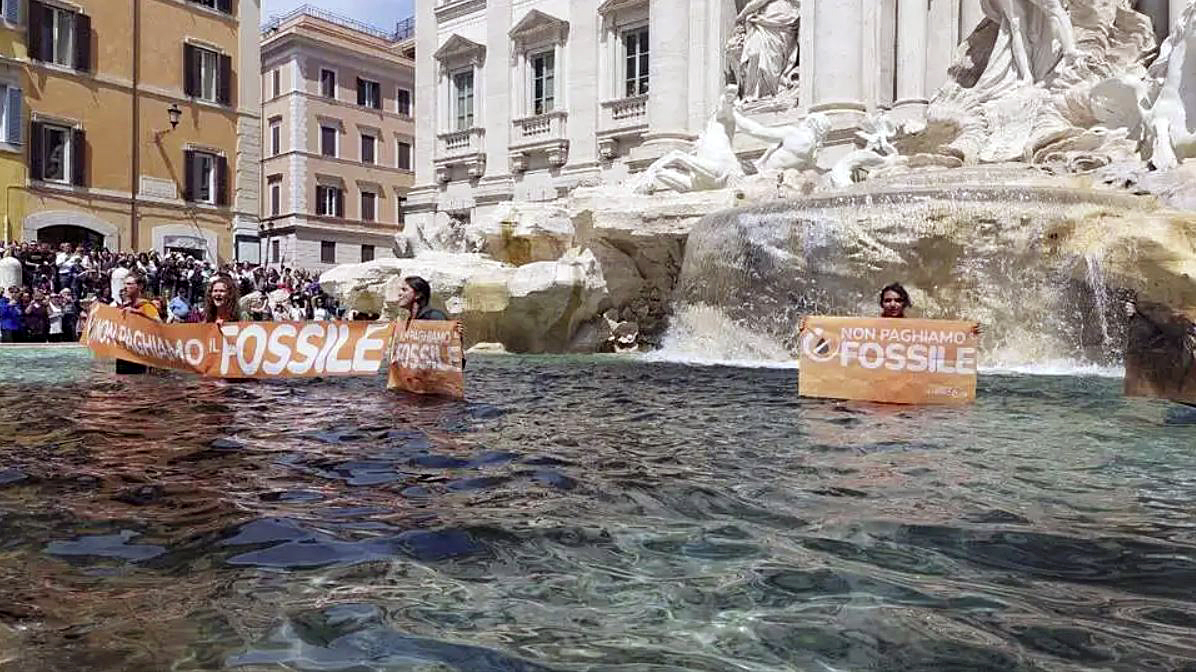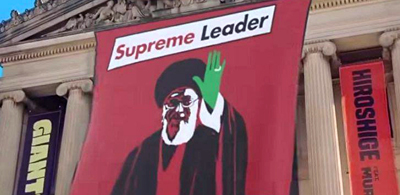Eco-Vandals Attack Trevi Fountain in Rome
Years ago I visited the Trevi Fountain in Rome, Italy. Built in the mid-1700s and located in the Piazza di Trevi square, it is a breathtaking structure bursting with history and glorious art. Like most tourists, I tossed a coin into the fountain pool… legend says those who do so will visit Rome again. I’m infuriated to get the news that the climate alarmist group Ultima Generazione (Last Generation), vandalized the site on May 21, 2023.
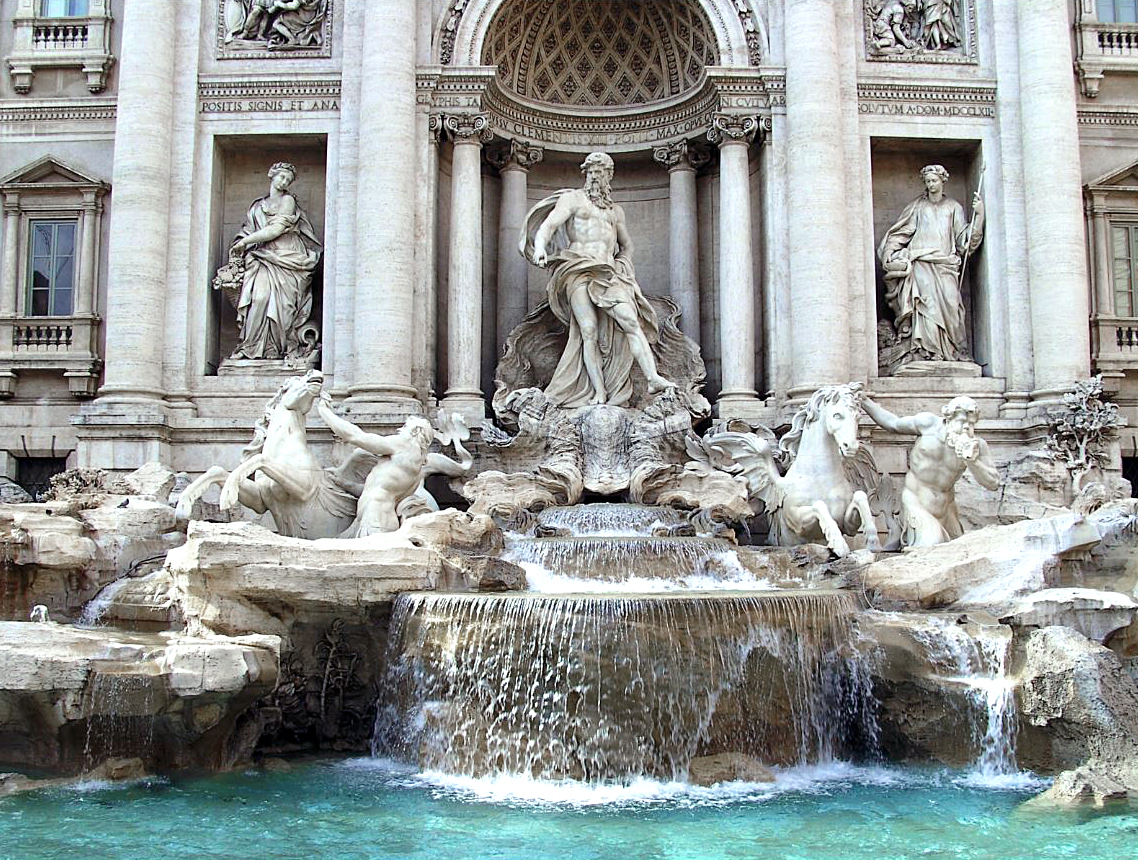
At 11:30 in the morning, as hundreds of tourists gathered at the internationally famous Trevi Fountain, nine block-headed activists from Ultima Generazione, jumped into the fountain and poured diluted charcoal dust into the clear water, turning the fountain pool black. The goons held orange cloth banners that read: “Non Paghiamo il Fossile” (We Don’t Pay The Fossil), alluding to their campaign to stop government subsidies from going to fossil fuel production.

While the vandals waded around in the blackened water—haranguing the gathered crowd with speeches about apocalyptic climate collapse, the stunned crowd began to heckle and boo them. In short order Rome’s police force arrived and forcefully dragged the soggy vandals out of the fountain and placed them under arrest.
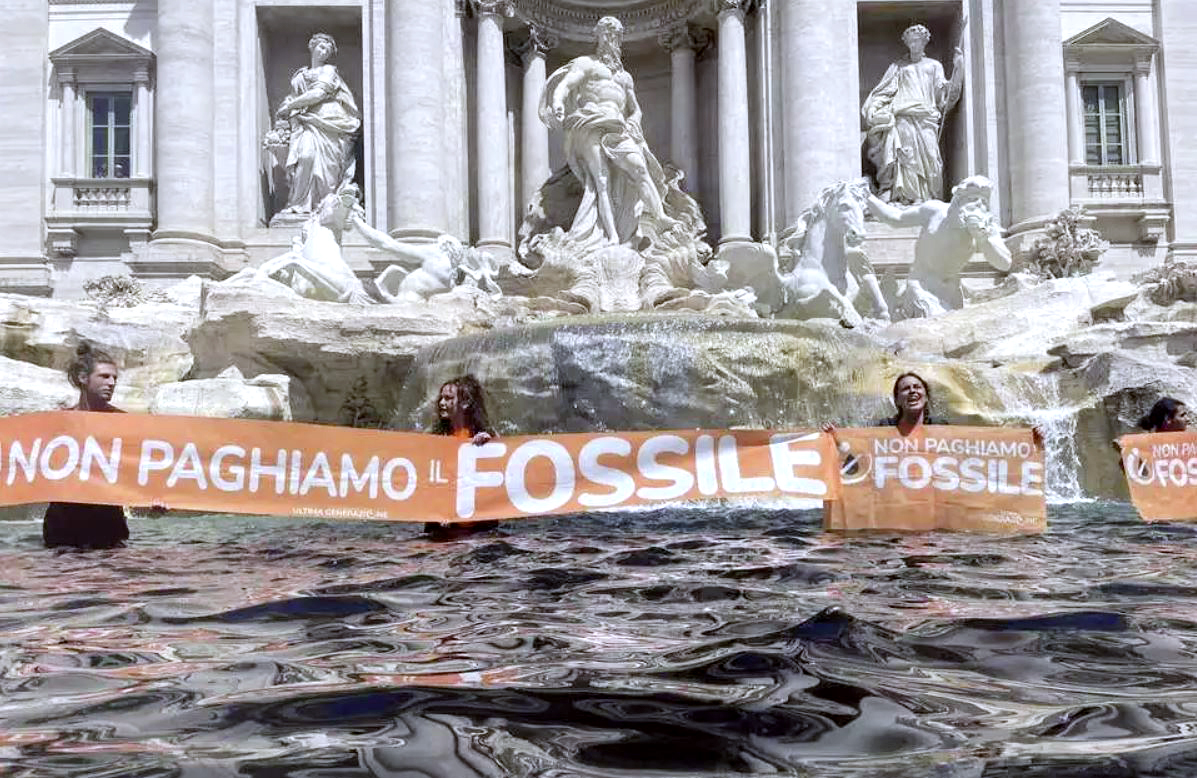
The historic Trevi Fountain was designed by sculptor and architect Nicola Savli (1697-1751). The fountain took thirty years to build, and was constructed between the years 1732 and 1762. Savli died before the project was completed, so Giuseppe Pannini stepped in and finished the undertaking in 1762. Made of 175 blocks of Travertine stone and Carrara marble, the fountain stands some 85 feet high and 160 feet wide.
The statues that embellish the Trevi Fountain were created by the greatest of Italy’s Baroque sculptors, Pietro Bracci (1700-1773). At the center of the fountain Bracci created a marble statue of Oceanus, the Greek Titan god of the mythic unending river that flows around the world and bears his name. Near Oceanus, Bracci placed two sculpted winged sea horses and two Tritons—the merman demigods of the sea.

As legend has it, thirsty Roman soldiers in 19 BC were led to a freshwater spring by a young girl. Soon after the Roman general, architect, and statesman Marcus Agrippa, who also constructed the Pantheon, ordered an aqueduct built to carry that spring water to Rome. To honor the young girl, Agrippa named his aqueduct Aqua Virgo. The watercourse was largely underground and carried water to the Baths of Agrippa and Vicus Caprarius, an ancient residential complex for elites.
Located almost beneath the present day Trevi Fountain, Vicus Caprarius—or “City of Water” as its been nicknamed, was discovered 30 feet underground in the 1990s while workers excavated the street. The patrician housing district became an archaeological site where hundreds of artifacts, coins, ceramics, and sculptures were found. Water from Aqua Virgo still fills the cisterns at Vicus Caprarius, and continues to flow into today’s Trevi Fountain. Currently the City of Water is a museum open to the public seven days a week.

A scene of the Roman soldiers finding the spring of antiquity in 19 BC was carved in marble and inset into the Trevi Fountain’s façade; it is seen above the statue of Oceanus. I don’t know the name of the artist who carved the relief sculptures. Not that any of this would matter to the Ultima Generazione dullards.
After its completion, the Trevi Fountain quickly became an aesthetic jewel of Rome. It would be a subject for a painter named Giovanni Paolo Panini (1691-1765). In his time the artist was well known for his landscape paintings of Rome, featuring the ancient ruins of the Roman Empire like the Colosseum, the Pantheon, and the Roman Forum.
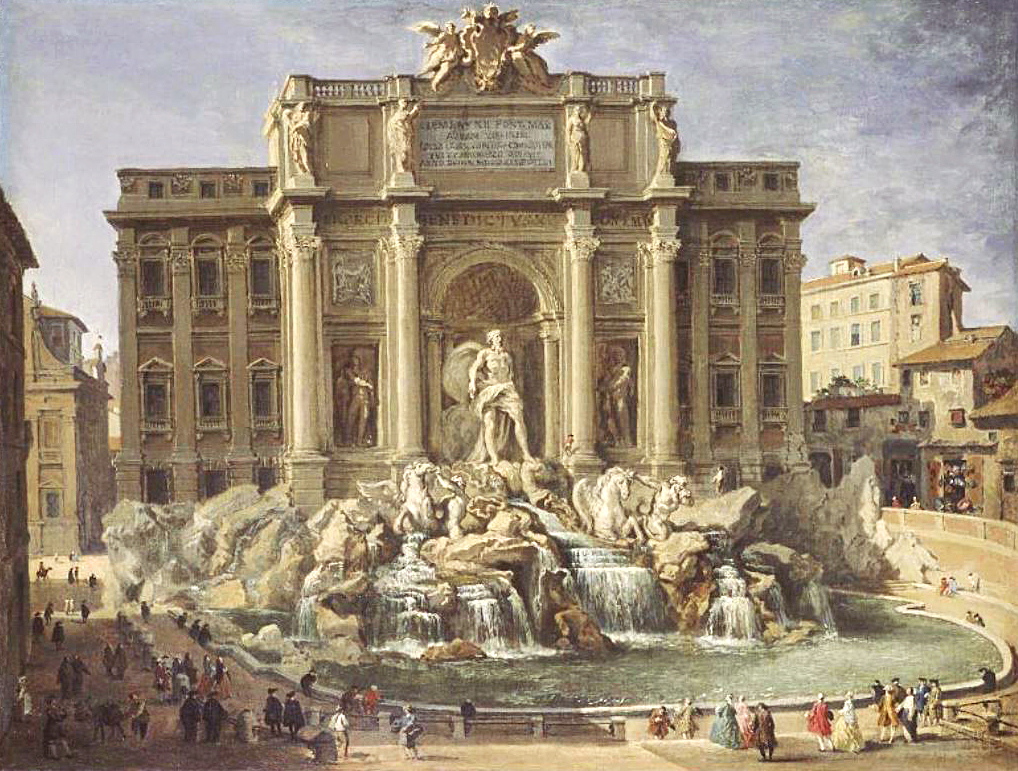
Panini made two oil paintings of the Trevi Fountain, one was titled Pope Benedict XIV Visiting the Trevi Fountain. It was painted around 1750 from a model while the fountain was still under construction, and is now housed in the Pushkin Museum in Moscow, Russia. The other is a similarly composed painting titled Fountain of Trevi, Rome—shown above and likely painted circa 1750.
But let’s return to the here and now and the contemptible attack on the Trevi Fountain. The large pool surrounding the fountain statuary holds over 79,000 gallons of water; and some 2,824,800 cubic feet of water spills from the marble waterfall each day. In 1998 recirculating pumps were installed to recycle the water, keeping it fresh and clean. Because of the charcoal pollutant dumped into the pool by the eco-vandals, it will take more than 79,000 gallons of water to flush the charcoal from the fountain.
Rome’s Mayor Roberto Gualtieri released a statement on his Facebook page, that in part read:
“Today nine activists poured charcoal into the Trevi Fountain. Thanks to the timely intervention of the local police of Rome, they were stopped immediately and were only able to pour two of the many jars they had with them. In any case, a complex cleaning operation will be necessary which will cost a lot of work, will involve public resources, and will lead to the waste of 300,000 liters of water to empty and refill the fountain, which works with water recycling. A significant environmental damage.
From an initial assessment, fortunately there shouldn’t be any permanent damage: fortunately, the charcoal appears to have deposited on the surface of the waterproof tank and not on the porous marble, and therefore it will probably be possible to remove it completely. But the risk of worse damage was once again considerable. I therefore reiterate that this is not the right way to lead a battle for the environment and against climate change.”
Ryan Maue, former chief scientist for the National Oceanic and Atmospheric Administration, said the attack was carried out by “climate eco-anarchists.” He went on to say, “Italy recently suffered major flooding, so the climate eco-anarchists attacked the Trevi Fountain to get Europe to abandon fossil fuels and undergo extreme de-growth.”
In Sept. of 2022 I began writing about Ultima Generazione and allied eco-extremist groups, because they began a war on art that mounted attacks on artworks and museums. The half-witted “strategy” was meant to focus a spotlight on their contention that the world would soon end because of climate change.
So far Ultima Generazione vandals have hurled paint on the La Scala Opera House in Milan, messed up a sports car painted by Andy Warhol on exhibit in a museum in Milan, raided the Uffizi Gallery in Florence to glue their hands to Botticelli’s painting Spring, and turned the water in the Trevi Fountain black.
The climate cultists of Ultima Generazione have driven millions of people from their cause… that is their only accomplishment.
